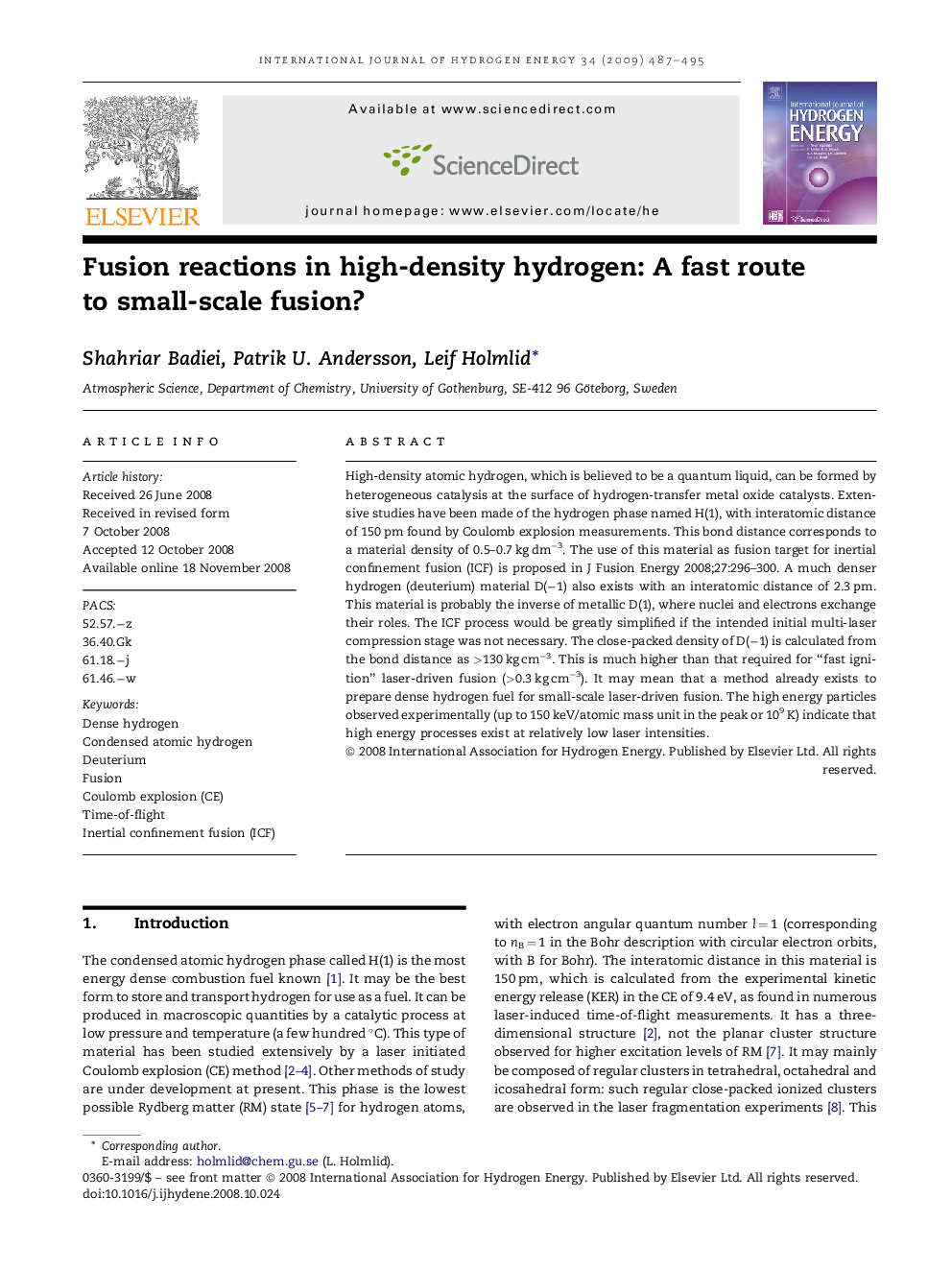| Article ID | Journal | Published Year | Pages | File Type |
|---|---|---|---|---|
| 1278098 | International Journal of Hydrogen Energy | 2009 | 9 Pages |
High-density atomic hydrogen, which is believed to be a quantum liquid, can be formed by heterogeneous catalysis at the surface of hydrogen-transfer metal oxide catalysts. Extensive studies have been made of the hydrogen phase named H(1), with interatomic distance of 150 pm found by Coulomb explosion measurements. This bond distance corresponds to a material density of 0.5–0.7 kg dm−3. The use of this material as fusion target for inertial confinement fusion (ICF) is proposed in J Fusion Energy 2008;27:296–300. A much denser hydrogen (deuterium) material D(−1) also exists with an interatomic distance of 2.3 pm. This material is probably the inverse of metallic D(1), where nuclei and electrons exchange their roles. The ICF process would be greatly simplified if the intended initial multi-laser compression stage was not necessary. The close-packed density of D(−1) is calculated from the bond distance as >130 kg cm−3. This is much higher than that required for “fast ignition” laser-driven fusion (>0.3 kg cm−3). It may mean that a method already exists to prepare dense hydrogen fuel for small-scale laser-driven fusion. The high energy particles observed experimentally (up to 150 keV/atomic mass unit in the peak or 109 K) indicate that high energy processes exist at relatively low laser intensities.
